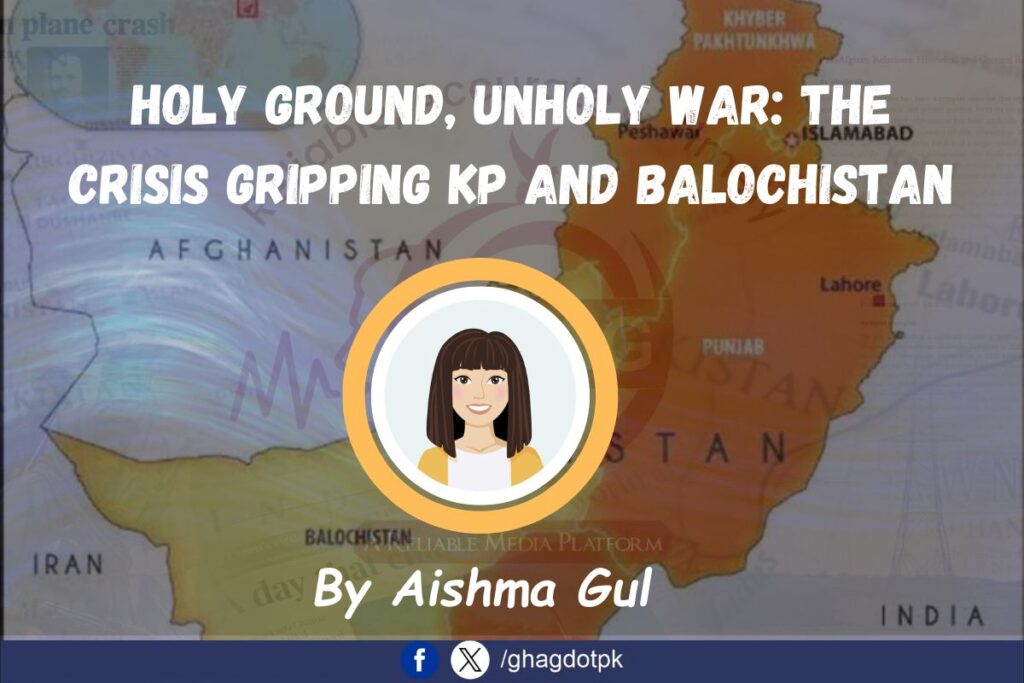“How can a society heal when the very places that nurture the soul are lit on fire?”
What a haunting question, one that reflects a tragedy currently transpiring in Pakistan’s *Khyber Pakhtunkhwa* (KP) and *Balochistan* provinces — where attacks on clerics and mosques continue to shatter havens of worship and plant the bitter, evil seeds of communal discord. The story that follows is not just a listing of events; it is a probing examination of the confluence of extremist ideology, sectarian violence and the steadfast commitment of Pakistan’s security forces.
February 28, 2025, A suicide bomber detonated explosives in the mosque of Darul Uloom Haqqania in Joharabad in the Nowshera district of Khyber Pakhtunkhwa (KP), killing six, including Maulana Hamid ul-Haq, the powerful cleric who led the seminary. This attack was not just a tragedy — it was a declaration of war on the very concept of religious authority itself.
The Nowshera Attack: A Symbolic Strike
The Darul Uloom Haqqania seminary, which was founded in 1947, has been a paradox for a long time. It trained thousands in Deobandi dogma, its late chief, Maulana Sami-ul-Haq. His son, Hamid ul-Haq, had only recently mediated between Islamabad and the Taliban, establishing the seminary as a religious powerhouse and geopolitical actor.
– Why This Matters:
The assault was aimed at Friday prayers, to maximize casualties and psychological effects.
By picking Haqqania, a pro-Taliban institution, terrorists are trying to sow discord among rival networks.
KP’s security apparatus, already under pressure after the January 2023 Peshawar mosque bombing (100+ dead), is once again coming under the microscope.
Clerics on the List: A Decade of Targeted Erasure
1. The Moderates: Hushed Voices
Dr. Muhammad Farooq Khan (2010),
A psychiatrist and Islamic scholar, Dr. Khan publicly denounced suicide bombings as “un-Islamic.” He was gunned down in his Mardan clinic on Oct 2, 2010, by suspected TTP militants. His death was an early warning: those clerics who preach moderation can be wiped out.
Maulana Sami Ullah (2019)
The sectarian killing of this Shia scholar in Quetta by Lashkar-e-Jhangvi (LeJ) on July 12, 2019, was not just sectarian — it specifically targeted voices that bridged Sunni-Shia divides.
2. The Pro-State Clerics: Collateral of Counter-Terrorism
– Assassination of Pro-Government Cleric in Mastung District (February 2025): Baloch insurgents assassinate a pro-government cleric, undermining state efforts to co-opt religious leaders.
– Killing of Lakki Marwat Imam (February 2025): Militants targeted a mosque imam, severing a key link between communities and security forces.
– North Waziristan IED Attack (2023): The assassination of a pro-government cleric underscored how militants are increasingly isolating state-affiliated religious leaders.
Mosques Become Targets in Global Conflict
– Sectarian Bloodshed
Quetta (2014, 2017): Sunni and Shia mosques were attacked with bombs while worshippers prayed, and 20+ were killed. These assaults manipulated the fellowship of congregants to exacerbate division.
Orakzai District (2012): A suicide bomber struck a Sunni mosque that left dozens dead, a sign of K.P.’s enduring vulnerability.
– High-Profile Infiltration
Peshawar Police Mosque (2023): A suicide bomber entered a high-security police compound, killing more than 100.
The Unseen Warfare
1. The Seminary Paradox
Institutions such as Haqqania find themselves trapped in a double bind, attacked for radicalizing students and targeted by rival powerbrokers who wish to erase their presence.
2. Digital Incitement
A 2023 report by the EU DisinfoLab revealed that 237 Pakistani clerics were publicly included on hit lists belonging to militant outfits and shared on Telegram. Extremists use encrypted apps to inspire “lone wolf” attacks.
3. Geopolitical Fuel
KP: Militants leverage Pashtun ties to Afghan conflicts, framing clerics as “traitors” for supporting peace talks.
Balochistan: Sectarianism is a tool used by separatists to undermine the religious legitimacy of the state.
Security Forces: Adjusting in the Midst of Turmoil
Surveillance by Technology: There are over 200 high-risk mosques in KP that are monitored through AI now.
To break this cycle:
Reclaim Theological Narratives: Fund discussions led by clergy to counter extremist readings.
Mosques as Community Shields: Pair security measures with vocational programmes for youth in Mastung-like areas.
Globalize the Fight: Work with Saudi Arabia and Iran to curb sectarian propaganda.
As the poet Kishwar Naheed once wrote: “We have to grow trees on the ruins of mosques” Healing begins when faith spaces become fortresses of hope, not fear.






